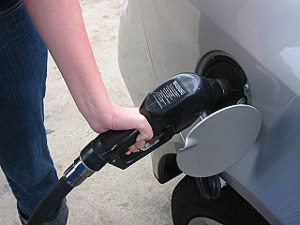This Friday is the deadline for public comments on the stricter vehicle efficiency standards from EPA and the Department of Transportation. The docket is likely to be overrun with statements for and against the regulation that would make cars and light trucks 30 percent more efficient in 5 years.
From an economic perspective, the social benefits of the rule outweigh the costs. The environmental, health, and energy security benefits — most especially from reducing the tailpipe emission of greenhouse gases — could more than double the estimated costs to manufacturers of installing more fuel efficiency technologies: social benefits could total over $800 billion, compared to around $400 billion in compliance costs.
But there will also be the straight up savings to consumers, who will spend a fraction of the current cost of filling their tanks. The benefit to Americans’ pocket books could reach as high as $2 trillion.
This line item alone swamps the price tag on the rule making it overwhelmingly justified — but some opponents of the rule may want the EPA to nullify these savings.
Their argument goes something like this: Consumers have the option to buy more fuel efficient cars right now, and they do not. Therefore, there must be something about having bigger, heavier, more powerful cars that benefits American consumers. Since this regulation could limit their ability to buy these larger, those citizens would have to do without something they value.
Opponents of stricter fuel standards admit that it is almost impossible to value that preference for bulkier cars, but they might try to convince the agencies that it is at least as much as the fuel savings we’d see at the pump. Since consumers could have those same fuel savings today by buying a Prius or an Insight, but forgo those cars for an Explorer, then the lost consumer benefit would need to be at least that amount.
But how consumers choose and value cars is more complicated than that. A car’s newness, size, and power are valued not just for their functionality, but for their relation to the others in the parking lot. Consumers value horsepower not just for speed but as a status symbol and for the ability to out-accelerate others at a traffic light. People don’t necessarily want a big car, they just want a bigger car.
The problem with prestige goods is they don’t actually increase welfare or status. If Smith buys a bigger car, Jones has to buy a bigger car as well to catch up; relative to average car size, neither has really moved ahead. By devoting resources to conspicuous features like size, less visible features like fuel efficiency and financial savings are sacrificed.
The proposed CAFE regulations correct a market failure and accomplish what the non-cooperative marketplace cannot: fuel efficiency increases, Americans get the value of fuel savings, and consumers do not have to risk their positional status, since over time the entire fleet’s average size and power will shift.
This is one of the chief reasons to regulate: to increase consumer welfare by doing what the market can’t on its own. It might take consumers some time to grow accustomed to the new vehicle options, but relatively quickly they will be just as happy with their new, more fuel-efficient models, and they will be thrilled by the trillions in savings at the pump.





